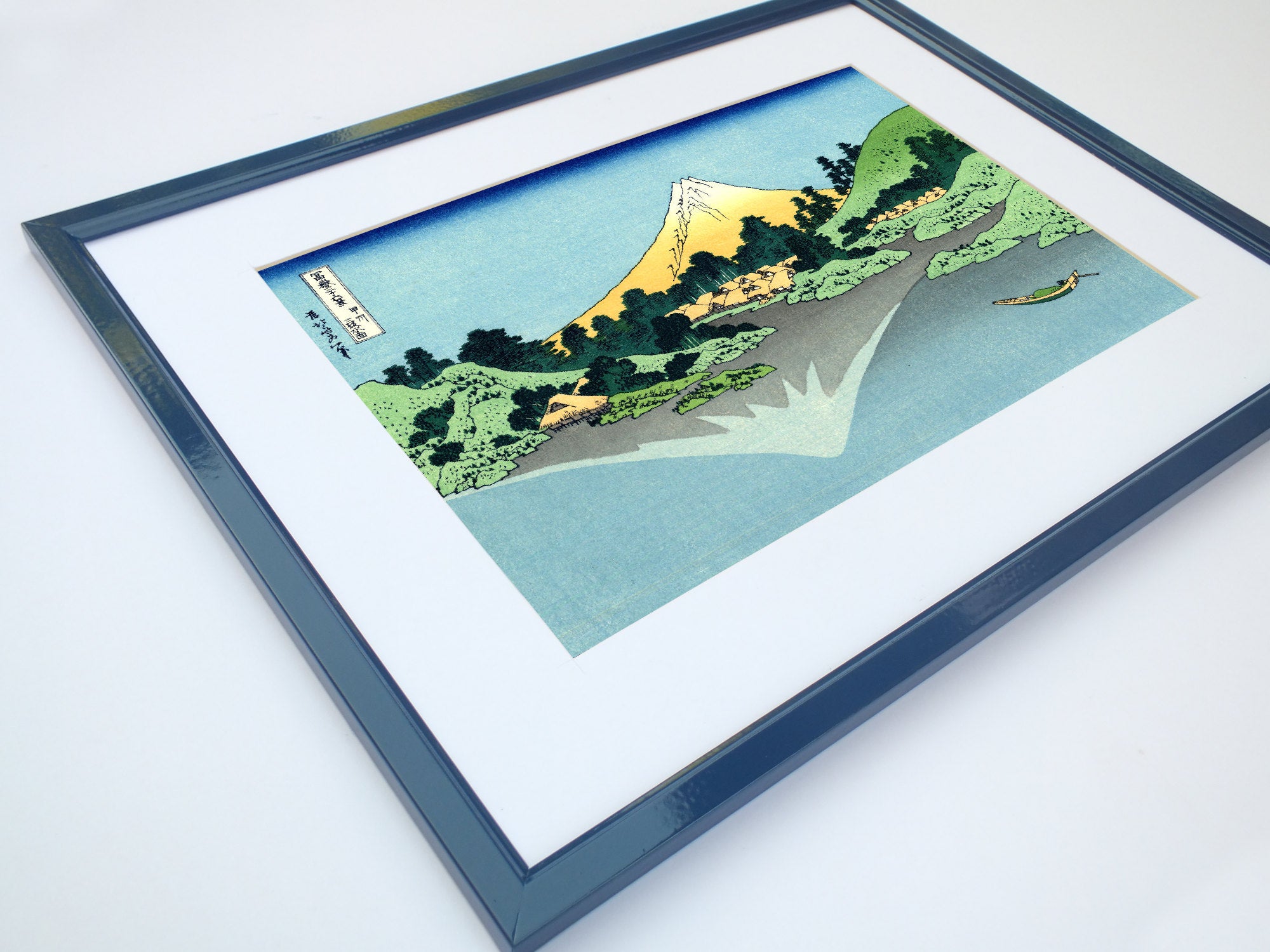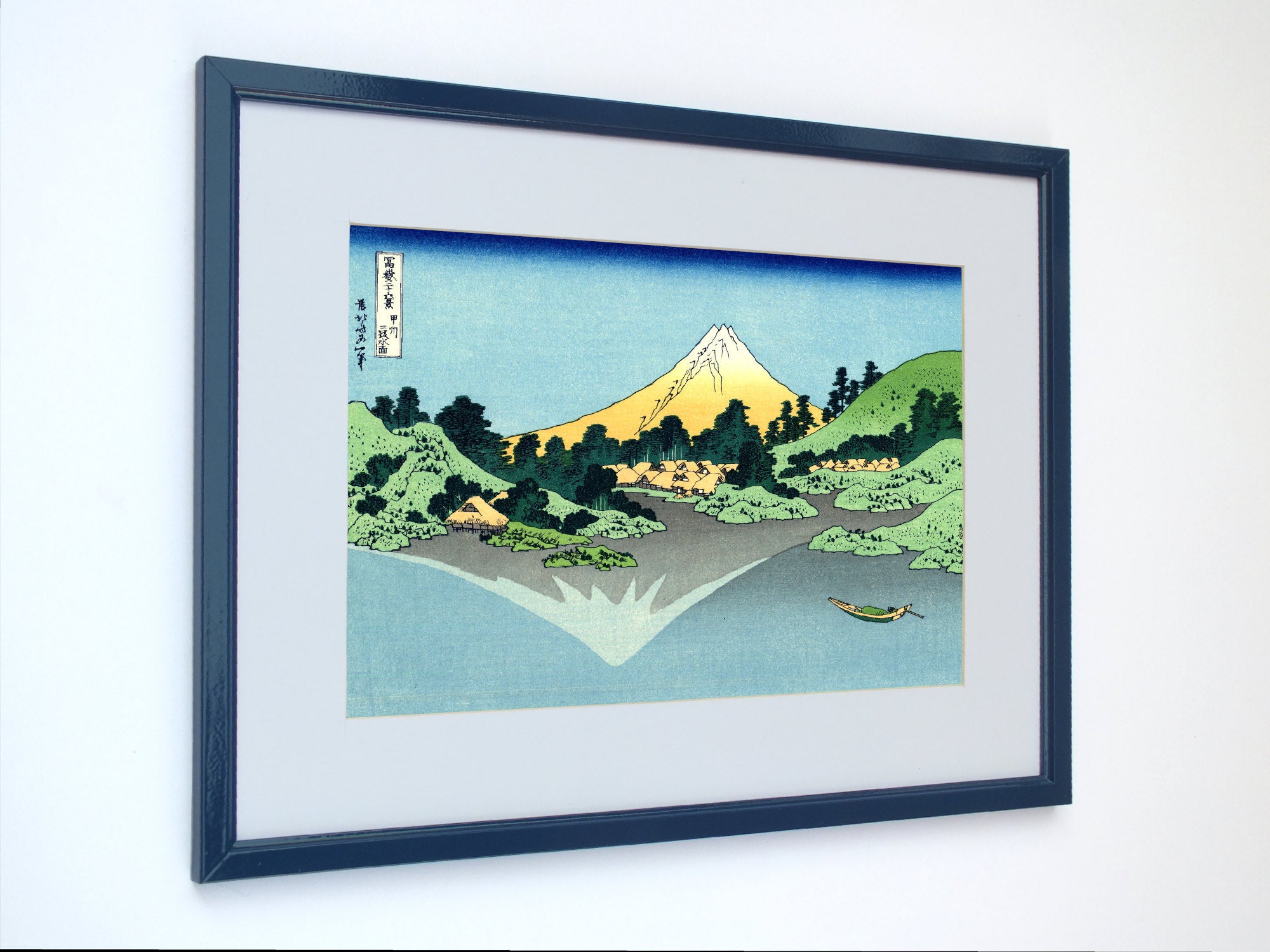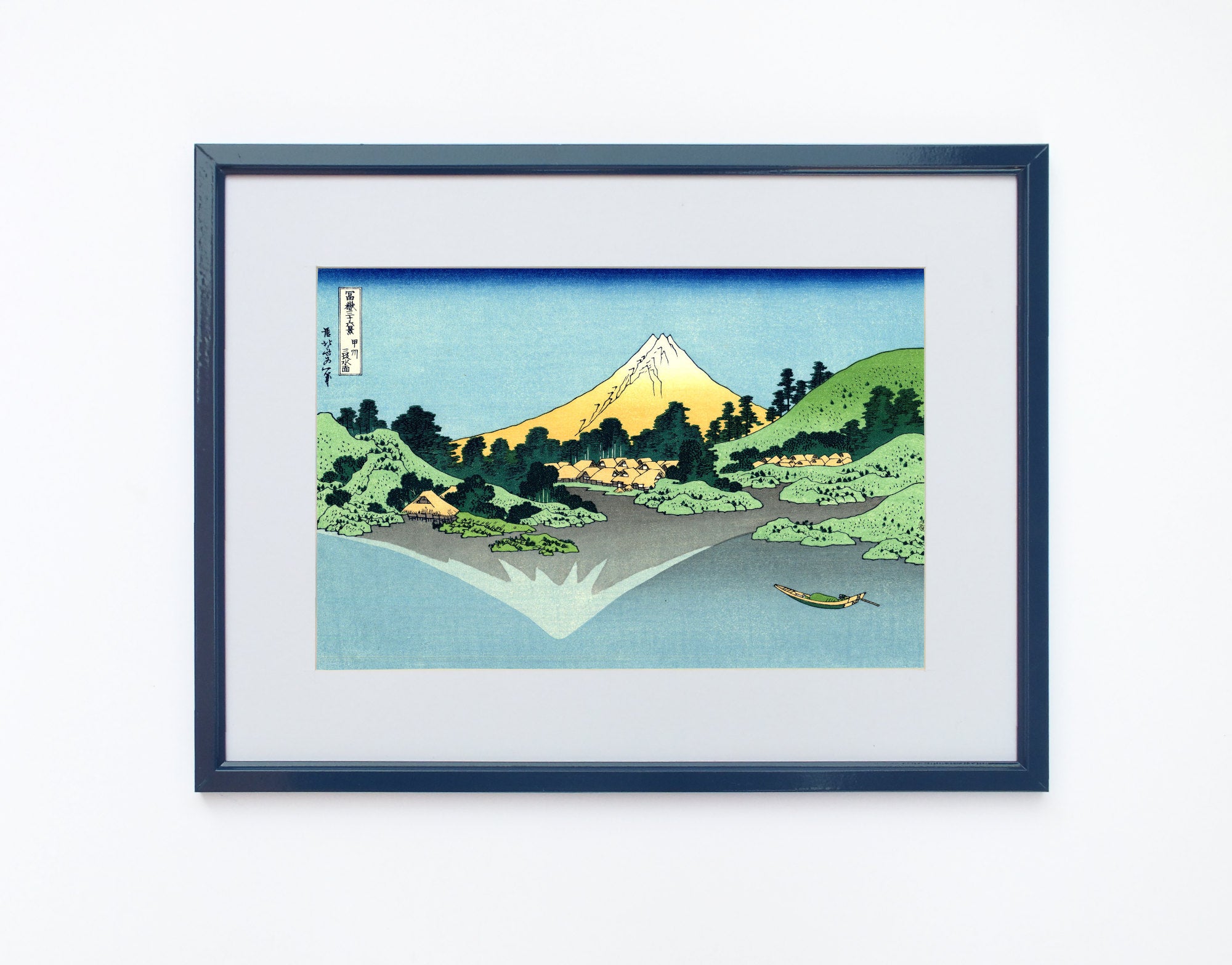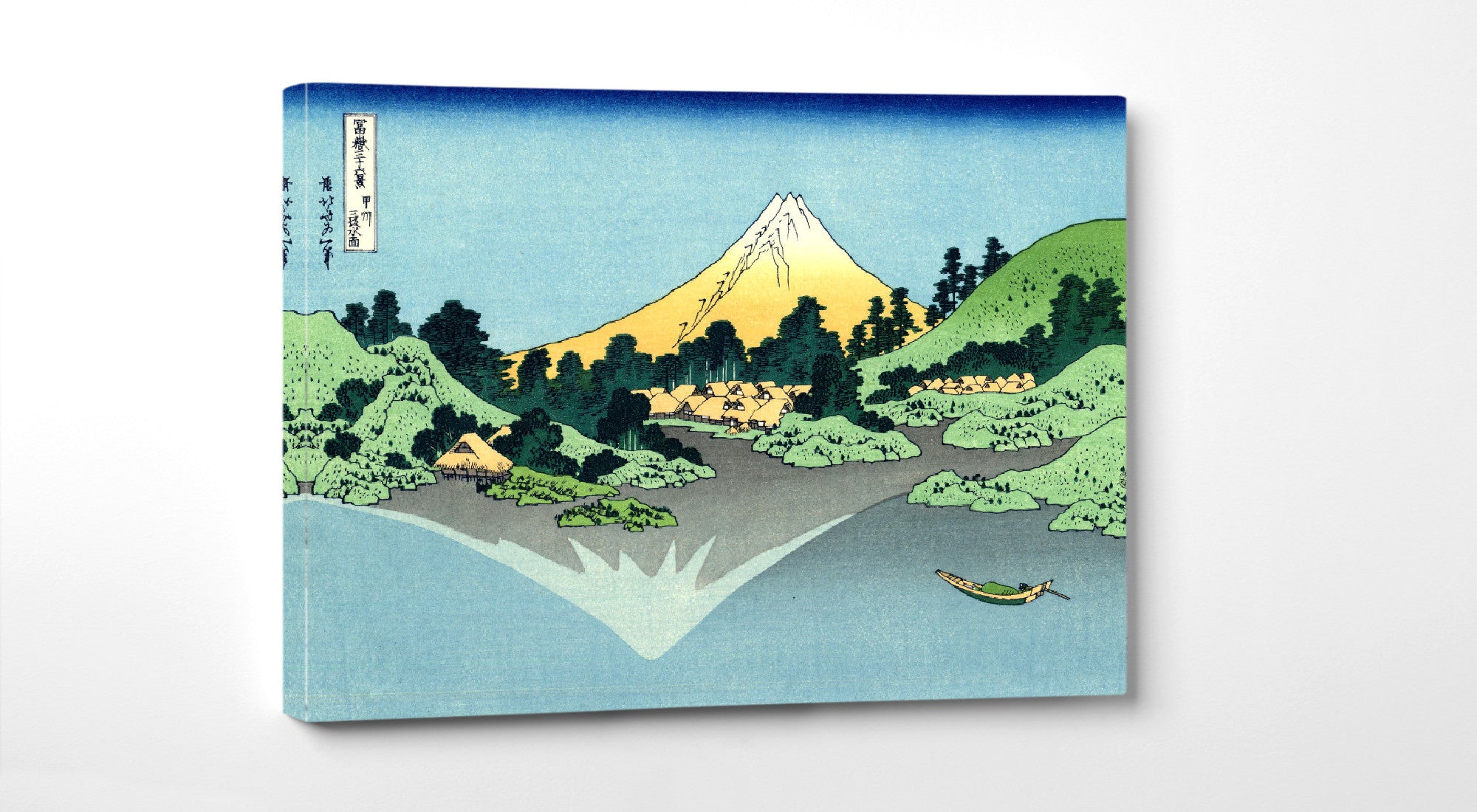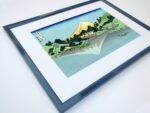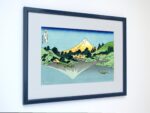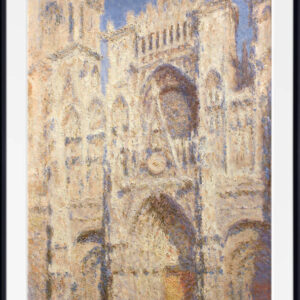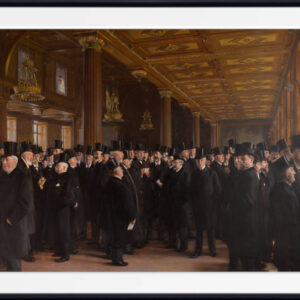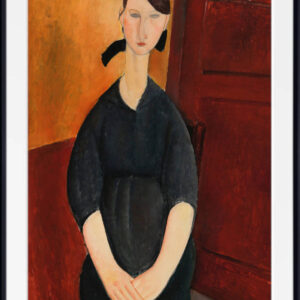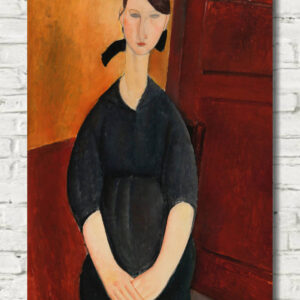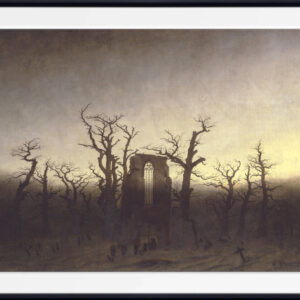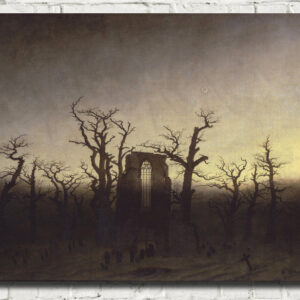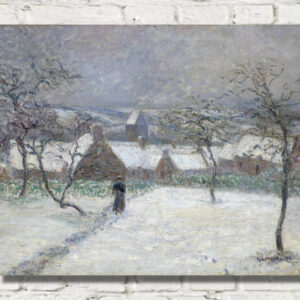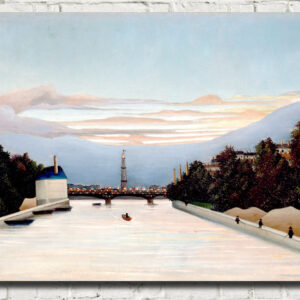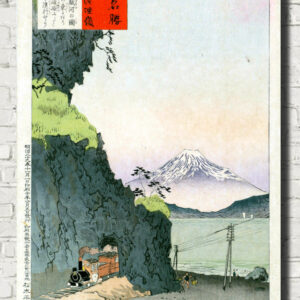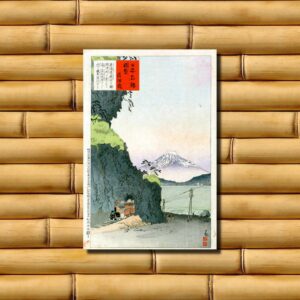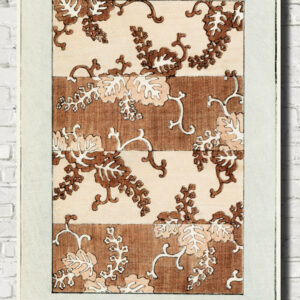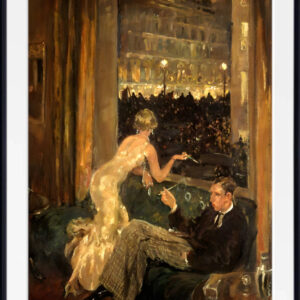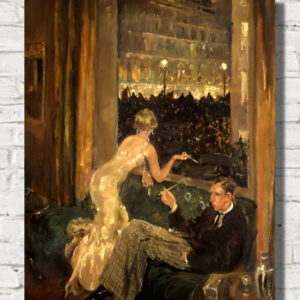36 Views of Mount Fuji, Fuji reflects in Lake Kawaguchi, Katsushika Hokusai, Japanese Print
Mount Fuji reflects in Lake Kawaguchi depicts one of the more popular themes of nineteenth-century Ukiyo-e art, and one of the most enduring symbols of Japanese culture and natural heritage, Mount Fuji.
In the print, Fuji is creatively mirrored by the shore of the lake below, in a tranquil scene which plays on the movement of light, cloud and water, offering clarity in the lake’s reflection. This mirror-reflection provides an unusual play on fantasy and reality, with the bare-topped, cracked and jagged edges of the real Fuji standing in contrast with the more romantic, snow-capped depiction in the reflection.
Hokusai appears to suggest the two “faces” of Fuji; the ideal below, and the strong, physical aspect above. This depiction of Fuji was not just influential artistically, it served a purpose in Japanese society. The Edo period (1603 – 1868) was a relatively stable and peaceful moment in Japan’s history, when citizens enjoyed the luxuries of national travel through newly fortified “highway” networks, and would often purchase or collect depictions of such natural sites as visual souvenirs of their experience.
Hokusai created the “Thirty-Six Views” both as a response to a domestic travel boom and as part of a personal obsession with Mount Fuji. It was this series, specifically The Great Wave print and Fine Wind, Clear Morning, that secured Hokusai’s fame both in Japan and overseas. As historian Richard Lane concludes, “Indeed, if there is one work that made Hokusai’s name, both in Japan and abroad, it must be this monumental print-series”. While Hokusai’s work prior to this series is certainly important, it was not until this series that he gained broad recognition.
All prints are made using archival art stocks and UV pigment inks to give up to 200 years life. Choose from unframed, framed and mounted and canvas panel options.

